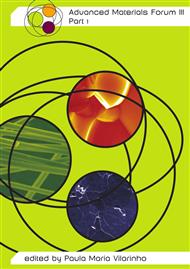p.584
p.589
p.594
p.599
p.604
p.609
p.614
p.619
p.624
Statistical Modelling of the Particle Size Composition of an Alumina Matrix for No-Cement Self-Flowing Refractory Castables
Abstract:
In the processing of any particulate system (including refractory castables), the finer sized particle fraction (matrix or filler) is mostly responsible for the final system properties. Alumina fine powders were used in this work as raw materials, namely two tabular alumina fractions (–500 mesh and –230 mesh) and a commercial reactive alumina. Statistical modelling and the Response Surface Methodology (Statistica, Mixtures Designs and Triangular Surfaces module) were used to optimise the particle size composition of the three-component mixtures leading to matrix maximum flowability. The mixing methodology, aimed at minimising the water content, was kept constant. No-cement alumina castables produced with the various fine size powder mixtures, were used to prepare test-pieces. After drying and sintering, their mechanical resistance (MoR), density, porosity, water absorption, thermal shock behaviour and microstructure were evaluated. The results obtained evidenced the relevance of variables such as the water content per unit specific surface area, needed to reach the self-flow “turning point”, and validated the statistical optimisation method used. Moreover those results showed the existence of a matrix composition range, which favours the formation of a flow-bed that enables the aggregate self-flow.
Info:
Periodical:
Pages:
604-608
Citation:
Online since:
May 2006
Authors:
Price:
Сopyright:
© 2006 Trans Tech Publications Ltd. All Rights Reserved
Share:
Citation:


